

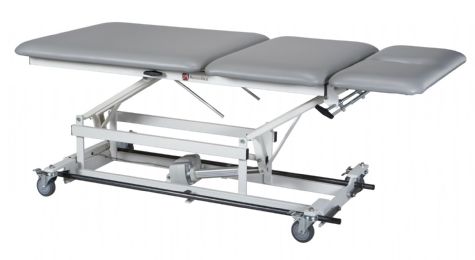
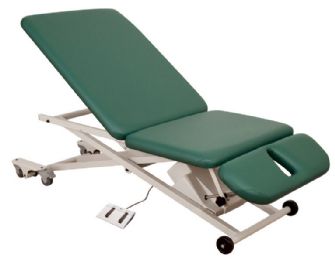
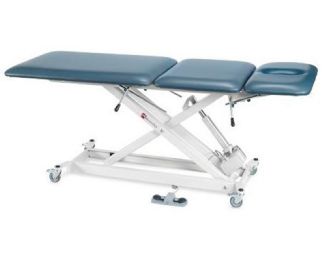
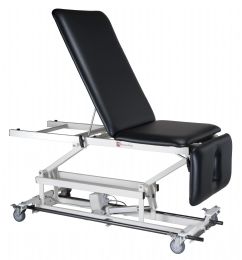
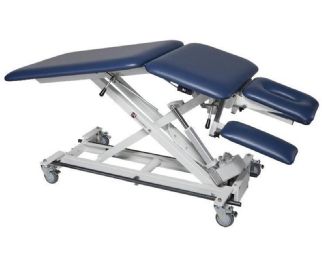
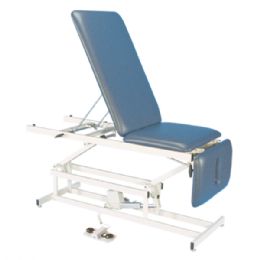



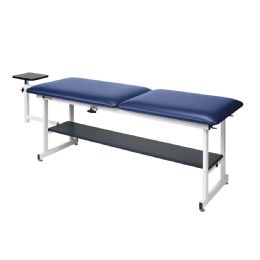
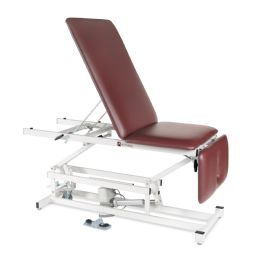
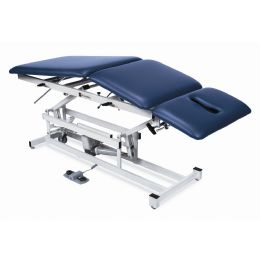
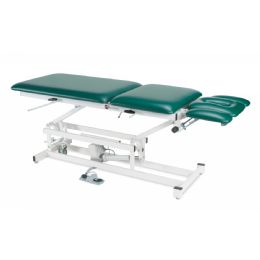
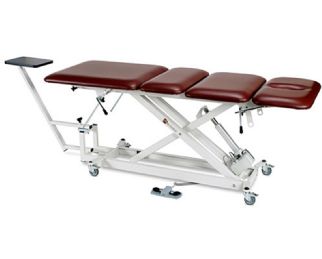
.jpg&newheight=260&quality=80)
~2.png&newheight=260&quality=80)








What are Traction Tables?
Traction tables are available in several configurations and styles to specifically meet the individual spinal decompression requirements of various patients. While they are most often utilized in the chiropractic profession, there are many medical and therapy practitioners who incorporate traction devices into their practices for their patients.
Unlike their predecessors, today’s traction tables are mechanized to better control the angle and force of spinal disc distraction. Non-mechanized traction tables of the past were not very effective at reducing intradiscal pressure, which resulted in the body’s natural propensity to resist the external force created and induce muscle spasms. Mechanized traction tables employ an on-board computer to reduce these tendencies, enhancing control of the traction force to more effectively diminish intradiscal pressure.
Traction devices are available in three basic styles that include mechanized traction treatment tables, inversion suspension chairs and tables, and intersegmental roller tables.
Mechanized Traction Tables
Highlighting movable sections and height adjustment capabilities for the practitioner, mechanized traction tables offer programmable mechanized adjustments to facilitate spinal decompression. These tables can also double as treatment tables for other medical and therapy purposes, and can additionally be used for musculoskeletal assessments.
Mechanized traction tables often feature hands-free adjustments as well, with foot-powered or alternative height controls and/or patient positioning so that practitioners can keep their hands on the patient as needed. The mechanized height controls and adjustable sections additionally aid in safer patient transfers.
Inversion Traction Devices
Another very effective approach for spinal decompression is the use of inversion therapies. Inversion involves equipment that allows the body to be inverted at varying degrees all the way to being completely upside down. Because gravity takes its toll on our bodies every day by compressing the spine and weight-bearing joints, reversing the direction of our bodies can help immensely in relieving this usual pressure. Inversion tables and chairs put the body in line with the downward force of gravity, helping the spine and joints to elongate and create more space between the discs and ligaments.
This opposite pull of gravity aids in decompressing the body’s joints below the anchor, resulting in each joint being loaded in an equal and opposite parallel to the body’s usual standing position of joint alignment.
Intersegmental Traction Roller Tables
This highly specialized equipment works with mechanized rollers built-in to the table to create passive motion that gently stretches spinal joints. Progressively re-establishing the spine’s normal ranges through the changing contact pressure of the roller mechanism, the roller moves up and down a patient’s spine. The height of the rollers is adjustable to provide appropriate amounts of the pressure needed for each patient’s individual needs, while many other adjustment features and vibration options are available to provide more customized treatment as well.
What are the Health Benefits of Traction Equipment?
All of the modern medical traction devices are designed to decompress the spine. Because the discs of the spine require nutrients from the fluid circulation created by movements of the spinal joints, spinal joint misalignment hinders this natural process resulting in degeneration and thinning of the spinal discs. Gravity’s constant force compresses the spine and weight-bearing joints leading to a host of problems that include bulging or herniated discs. Neural impingement (pinched nerves), muscle spasms, headaches, neck pain, back pain, leg pain and many other spine-related health issues can all respond favorably to today’s various traction therapies.
Traction devices are often used in place of surgical procedures to decompress the spine and to promote an optimal healing environment within the body. The benefits of using traction therapies include the induction of negative intradiscal pressure that promotes repositioning or retraction of bulging or herniated disc materials, and the reduction of pressure within the disc to allow the flow of healing nutrients and circulation.
Relaxation, pain relief, joint mobility, strength, balance and the circulation of cerebrospinal fluid are all enhanced through the use of traction devices. Improved blood flow and oxygen to muscles, ligaments and discs along with the gentle correction of spinal curves intensify well-being, decrease stress and provide healthier amounts of oxygen to vital organs and the brain. Traction equipment can aid in breaking up scar tissue and better alignment helps the body to heal more quickly and efficiently.
Hulet Smith, OT
Rehabmart Co-Founder & CEO
ck